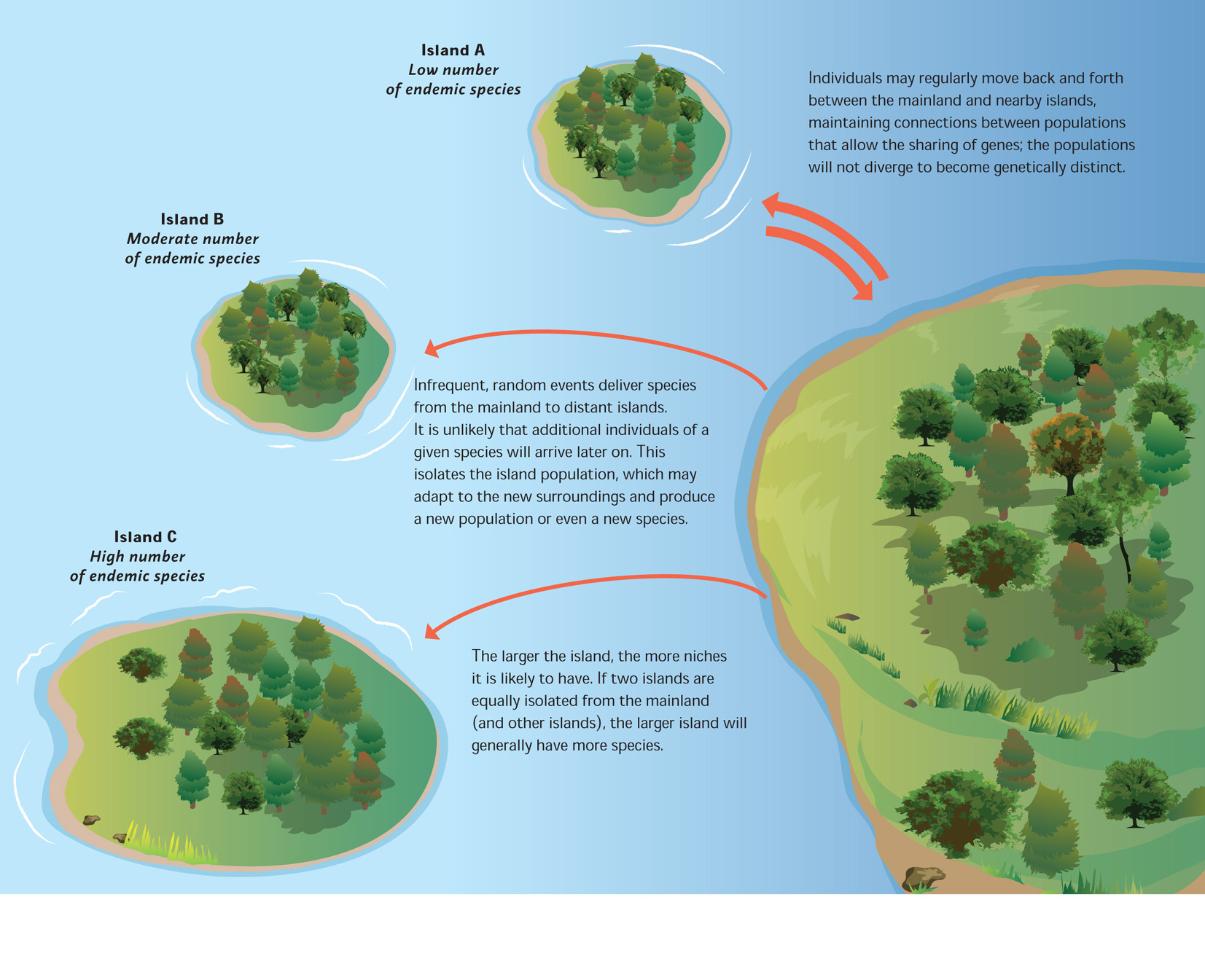Endemism increases with isolation, as does extinction risk.
Species come to islands such as Sumatra in various ways: They may be blown in on storms, they may arrive as lost migrators, or the island may have broken off from a larger landmass at some point. Because these are rare events, once a species arrives, it is unlikely to be joined by other members of its species. The founding population is therefore isolated, and as it adapts over time to its new island home, it may eventually evolve into a new species (see Chapter 11 for more on the founder effect). For this reason, the number of unique species (the degree of endemism) generally increases with isolation. On the Hawaiian Islands, almost 3,800 km (2,400 miles) from the nearest mainland, 90% of native species are endemic.
KEY CONCEPT 12.5
Isolated populations are especially vulnerable to detrimental environmental changes because they cannot freely breed with other populations and thereby increase their genetic diversity and chances of survival.
Their isolation and high endemism make remote islands particularly vulnerable to species loss. The smaller the population (often a reflection of the habitat size), the more likely it is that random events such as fires or floods might exterminate the entire group. And isolation reduces the chances of re-colonization that might replace lost members or increase genetic diversity. Today, human impact contributes to isolation in the form of habitat fragmentation—producing habitat “islands” where before there were larger expanses of uninterrupted habitat. Small, completely isolated ecological communities are at the highest risk for species extinction. Research by Luke Gibson and colleagues showed that after dam construction flooded a Thailand forest, leaving behind some small islands covered in forest, almost all small mammal species were lost in as little as 5 years on the smallest islands (less than 5 hectares [12 acres] in size).
Isolation can be a recipe for disaster in the face of rapid environmental change. Stuart Pimm of the Nicholas School of the Environment at Duke University and his colleagues analyzed the fossil record and the living species on Pacific islands colonized by humans about 4,000 years ago and concluded that as many as half of the species might have been driven to extinction after humans arrived. In fact, even though they make up a tiny percentage of the land mass on Earth, islands have accounted for about half of all recorded extinctions in the past 400 years. In Hawaii alone, fully one-half of the indigenous flora faces immediate extinction. Such a high extinction rate threatens the fragile tapestry of life on these islands, from the soil and freshwater supplies to the health and economic future of the islands’ residents. INFOGRAPHIC 12.5
Isolation can increase the number of endemic species in an area because local populations do not “share” genes with other populations. Over time, an isolated population may diverge from its ancestral population as it becomes adapted to its immediate environment.


Why might populations of small animals, like salamanders that live only at high elevations on adjacent mountains, remain isolated from one another, even though there are no barriers between the two mountains?
Though the 2 mountains are connected to one another terrestrially, a small animal like a salamander cannot disperse all the way down a mountain and up the next one. Small animals like this may simply not travel more than a few hundred feet in their entire lives. But even if they could travel that far, they would have to leave suitable habitat and travel through unsuitable habitat (lower elevations) to once again find suitable habitat at the same elevation on the neighboring mountain.